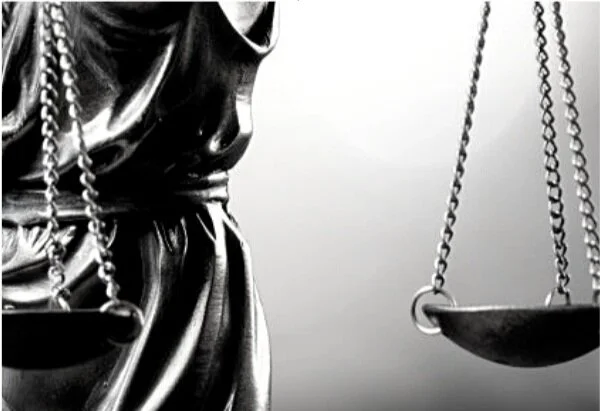Learning to Trust (Part 1)
/Last week, I facilitated my first in-person Constellation workshop since COVID hit in the beginning of 2020. I love facilitating these groups and being in the energy. Yet, I found myself obsessing about what could go wrong.
My mind just wasn’t letting me relax. I knew what this was all about—part of a pattern of worry about whether I would be seen, and, if so, would I be accepted?
Here we go again, I thought. I felt that low-level, free-floating anxiety not based on any reality, yet, still very real to me and potentially debilitating. Why do I always seem to go through this when I am doing something that puts me outside my comfort zone? How can I get my mind to stop this barrage of self-doubt and self-criticism?
Anxiety seems to be a major challenge of human beings in the 21st century. Perhaps you recognize this pattern of self-torture in yourself (I don’t know anyone who doesn’t slip into this trap of self-sabotage periodically).
Gratefully, I have learned a few tactics that have served me well in such situations. Before the workshop, I reminded myself, Linda, this is not about you. Whatever happens is what is supposed to happen. I turned over the outcome to my Higher Power and prayed for guidance and a peaceful heart. My prayer was pretty conversational, albeit a bit demanding, but slowly I began to feel the anxiety drain away.
I sat quietly and waited for the rest of my nervous system to settle down. Then I did a tapping exercise. I acknowledged my triggered emotions with the attendant physical and emotional symptoms. I validated my intention to be of help to others in the group and expressed my trust that I would be led for everyone’s highest intention. It worked well, and so did the workshop. But it did leave me pondering about this very human but exhausting pattern of self-doubting.
It brought to mind the book, Why Am I Afraid to Tell You Who I Am? Written in the 1960’s, author John Powell answered this question by pointing to our most basic fear: If I tell you who I am, you will reject me.
There it is: Abandonment:Fear of being rejected, dismissed or neglected or left. Child psychologists tell us that next to fear of falling, abandonment is an infant’s primal, innate fear. Researchers John Bowlby and Mary Ainsworth worked with mothers and infants in the 1950’s and 60’s. Both found that early attachment and our later attachment styles were intrinsically connected.
They found that the quality of the bond established in early childhood colored the way we trust that we will be taken care of throughout our life. This research led to the observation that there are basically three unique attachment styles (a fourth was added later). These are generally identified as: secure, ambivalent/anxious, avoidant, and chaotic/disorganized.[1]
In her 1990’s book, Hold Me Tight, Dr. Susan Johnson took this initial research to heart. She explored the theme of attachment styles in marital relationships. Her premise was that we each have a preferred level of closeness in our relationships. That preference is based on the early attachment experiences with our caretakers. Our attachment style determines the level of closeness we are comfortable with in our relationships. They can also predict the degree of distress we experience when we perceive our partner moving too far in or too far out of that comfort range.
For example, a person who had secure early attachments would be less reactive when their friend or partner expresses a desire for more alone time. In the same situation, someone who came from a chaotic, abusive or severely neglectful household would be more likely to have a heightened reaction. They may even wonder if this is the beginning of the end of the relationship. However, if our caretakers were warm and nurturing, we will generally be secure in our adult relationships, and be able to tolerate a wider range of interactions with others.
Since Dr. Johnson’s seminal work with couples, she has expanded her observations. Her work helps us understand that this dynamic operates in all relationships, whether between parent and child, close friends, or work colleagues. When we perceive others as moving beyond the container of comfort we are expecting or coming too close, panic is automatically triggered. This results in a fight or flight reaction. We may shut down and pull away, or start an argument, for example.
The irony about this whole human condition is that our deepest yearning is for someone to love who loves us back, and who we can depend on being there for us. In other words, we yearn for secure relationships, where we not only express our love and support, but we feel it in our body. The fear of abandonment, however, causes so much fear and shame, that it is the last thing we want to talk about when our relationships are in crisis. In working with couples, I see this all the time.
Case Example
In one case, a wife reported that she had discovered her husband had been cheating on her. She was understandably angry and hurt. She didn’t know if she could ever trust him again or if she even wanted to stay in the marriage. She had grown up in a family where there was an early separation from her mother who immigrated to the US, leaving her behind for 5 years with her overburdened grandmother. She wondered if she were lovable enough for anyone to want to be with her.
When she met and married her husband, she thought she was the luckiest woman in the world. She vowed to never let him see the insecure child who lived inside her. So when she discovered her husband’s infidelity, she became flooded with panic. Deep down she began questioning her worth again, and she felt the only option was to leave the marriage.
This terrified her husband, who everyone had always considered “one of the good guys.” He didn’t want to end the marriage, despite his behavior. Upon exploring his motives for stepping outside the marriage, he confided that he never felt safe telling his wife what he struggled with.
He was afraid she would give up on him just as his father had given up on him after leaving the family to start another family with someone else. He had been close to his father before his parents’ separation, but when his Dad left, he had little contact with him. He assumed as a young boy that somehow it was his fault, that there was something that his Dad didn’t like about him.
This left a scar that impacted his ability to be open and honest with his wife who he assumed would also leave if she ever saw the “real” man he was inside. The distance that grew between the couple ultimately led him to look elsewhere for comfort. The irony, however, was that they each wanted the same thing—a close, loving relationship. Yet, each of them was afraid to be vulnerable enough to show the messy parts of themselves. It was difficult for them to “feel” close, or to turn to each other when they were in distress, for fear of being rejected or abandoned.
Luckily for this couple, they turned to a safe space. They examined what had happened between them, and the antecedents in their early family of origin history. They had a chance to identify what needed to change for them to get what they needed from each other. Then, they could let go of the unrealistic expectations they held for themselves and each other. They could learn to turn toward each other with more vulnerability, and, in time, with more trust.
Home for the Holidays
Ultimately, each of us secretly struggles with this core question in our relationships: Will you be there for me when I am down? Will you find me to be “enough?”
It is no wonder that holiday times can be so challenging. Many of us generally spend more time with family and close friends, or, if you’re like me, doing something new with people we don’t know. Often unconsciously, we are continually calibrating the closeness-distance variable in each of these relationships.
This can be exhausting, especially for many of us with ambivalent/anxious, avoidant or chaotic attachment styles. The good news is that these can be altered, starting with awareness of the level of connection we are comfortable with, without judging ourselves for it. This may be different in each of our important relationships and at different times in our life.
The main question is about how free we feel to be and express ourselves, and how comfortable we are with others’ doing the same. Irritability, anger or rage (fight response) and/or a desire to walk away, shut down, disappear or avoid certain people or certain issues (flight response) are indicators of when we are being triggered. Checking in with our body about what we are feeling beneath our impulsive reactions is immeasurably useful. We can ask questions like, Am I feeling invisible, invalidated or unacknowledged? and Has someone overstepped into my space? These can help us understand how our emotions are connected to our perceptions about those experiences.
In the next post, we identify strategies to free ourselves from painful patterns from memories that keep us from bringing our best self to the world.
© Whatismyhealth




























Understanding our attachment styles can help us bypass destructive strategies and find a more authentic connection.